Introduction
In a landscape where operational efficiency and financial performance are paramount, organizations are increasingly turning to structured approaches for business performance improvement. This systematic methodology not only identifies inefficiencies but also paves the way for strategic enhancements that drive revenue growth and bolster resilience. From pinpointing underlying issues to fostering employee engagement and focusing on customer satisfaction, the journey toward improved performance is multifaceted.
By adopting clear objectives, leveraging data analytics, and embedding a culture of continuous improvement, businesses can navigate challenges and position themselves for long-term success. Embracing these principles is essential for any organization looking to thrive amid evolving market conditions.
Understanding Business Performance Improvement: Key Concepts and Importance
Business performance improvement is a systematic approach aimed at enhancing an organization's efficiency and effectiveness to achieve superior outcomes. This method is essential for companies tackling operational challenges, as it assists in identifying inefficiencies, enhancing workflows, and boosting revenue growth. Key concepts include:
-
Identify & Plan: Our team will identify underlying business issues and work collaboratively to create a plan to mitigate weaknesses and allow the business to reinvest in key strengths.
-
Operational Efficiency: Analyzing workflows and processes to eliminate waste, reduce costs, and improve service delivery is crucial. Many experts believe that operational efficiency is not just about cost-cutting but also about fostering innovation and adaptability within organizations. For instance, investments in immersive technologies for employee training and industrial maintenance are expected to reach $4.1 billion in 2024, demonstrating the sector's potential for significant efficiency gains.
-
Financial Management: A thorough understanding of financial health, including cash flow management, budgeting, and financial forecasting, is essential for informed decision-making. Research has indicated that firms with strong financial management practices experience a 20% increase in overall results compared to their counterparts. Our team employs a pragmatic approach to data, testing every hypothesis to deliver maximum return on invested capital in both the short and long term.
-
Test & Measure: We continually evaluate our strategies to ensure they are effective, allowing us to make data-driven decisions that improve performance.
-
Employee Engagement: Actively involving employees in enhancement initiatives fosters a culture of accountability and innovation, which is fundamental for long-term success. Engaged employees are 17% more productive, highlighting the direct link between engagement and performance.
-
Customer Focus: Enhancing customer satisfaction through improved service quality and responsiveness is vital for driving repeat transactions and referrals. Throughout the turnaround process, our team supports a shortened decision-making cycle, allowing your organization to take decisive action to preserve organizational health.
The significance of performance enhancement cannot be overstated. It not only helps organizations navigate through crises but also positions them for long-term success by creating a resilient operational framework that can adapt to changing market conditions. We continually monitor the success of our plans and teams through our client dashboard, which provides real-time analytics to diagnose your organization's health. As Bernard Marr states, 'building resilience to any threats that might emerge will be a key trend in 2024.' Furthermore, the example of John Deere's data monetization model demonstrates how utilizing sensor data from farm equipment can offer valuable insights, enhance productivity, and create new opportunities. This method highlights the potential of data-driven strategies in improving operational efficiency and overall organizational success.
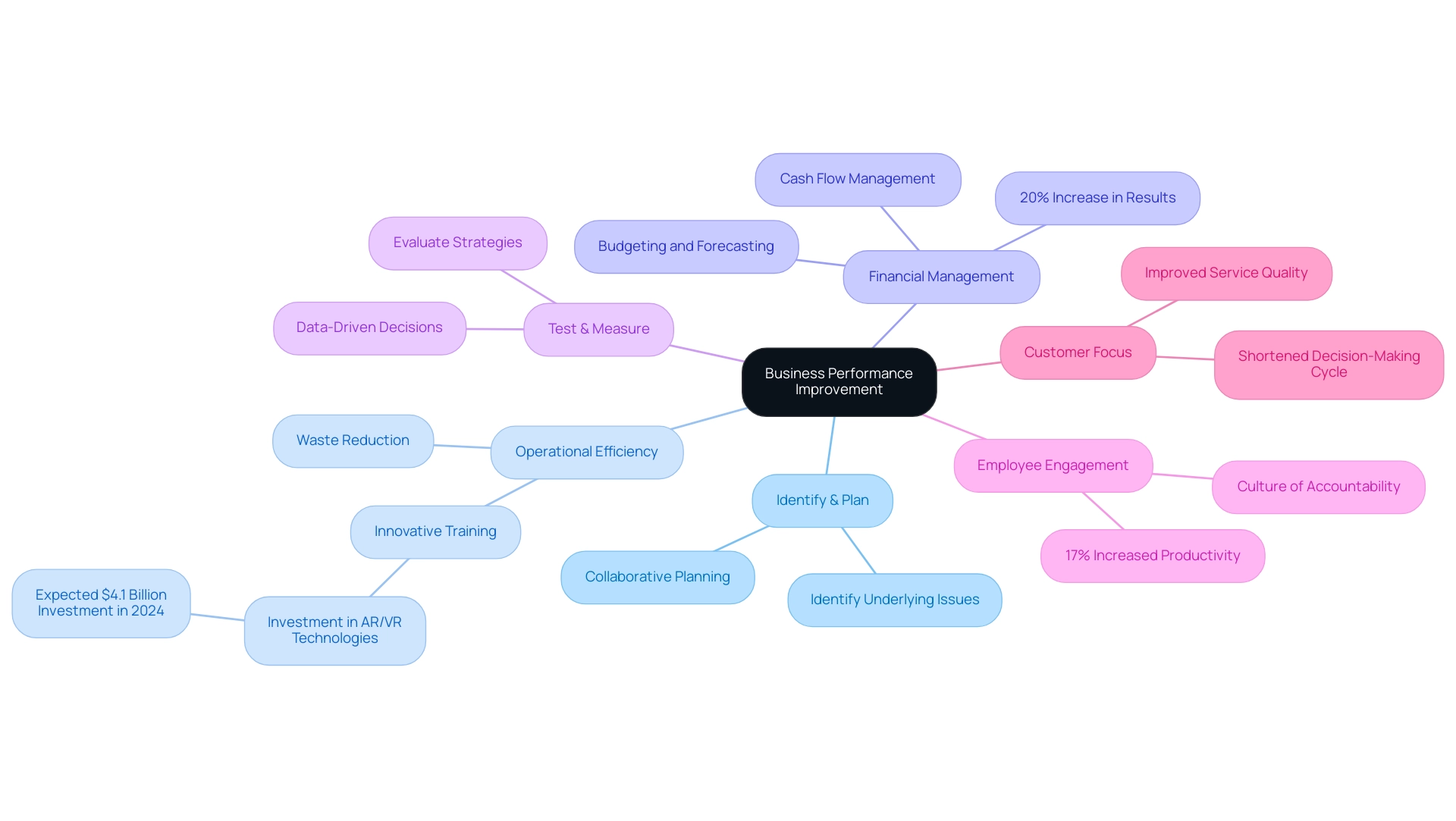
Step-by-Step Strategies for Effective Performance Improvement
To implement effective enhancement initiatives, follow these step-by-step strategies:
-
Identify Underlying Issues: Begin by evaluating current performance metrics. Analyze financial statements, operational processes, and employee feedback to identify areas needing improvement.
-
Conduct a Comprehensive Assessment: Following the identification of issues, conduct a thorough assessment of the current situation to gather insights that will inform your strategies.
-
Set Clear Objectives: Establish specific, measurable, achievable, relevant, and time-bound (SMART) goals that align with the overall business strategy. This clarity will guide your performance enhancement efforts.
-
Engage Stakeholders: Involve key stakeholders, including department heads and employees, in the enhancement effort. Their insights and buy-in are crucial for successful implementation.
-
Develop an Action Plan: Create a detailed action plan outlining the steps needed to achieve the set objectives. Assign responsibilities, resources, and timelines to ensure accountability.
-
Implement Changes: Begin executing the action plan, focusing on high-impact areas first. Our team supports a shortened decision-making cycle throughout the turnaround process, allowing your organization to take decisive action to preserve organizational health. Monitor progress closely and be prepared to adjust strategies as necessary based on feedback and results.
-
Measure and Analyze Results: After implementing changes, use real-time business analytics, including our client dashboard, to measure outcomes against the initial objectives. This will enable ongoing performance monitoring, ensuring that you maximize the return on invested capital through key performance indicators (KPIs).
-
Foster a Culture of Continuous Improvement: Encourage ongoing evaluation and adaptation of methods. Establish a setting where staff feel enabled to propose enhancements and innovate. By implementing the lessons learned through the turnaround process, you can establish strong, enduring relationships that support ongoing organizational improvement.
By following these steps, organizations can systematically enhance their effectiveness, leading to better financial stability and operational efficiency.
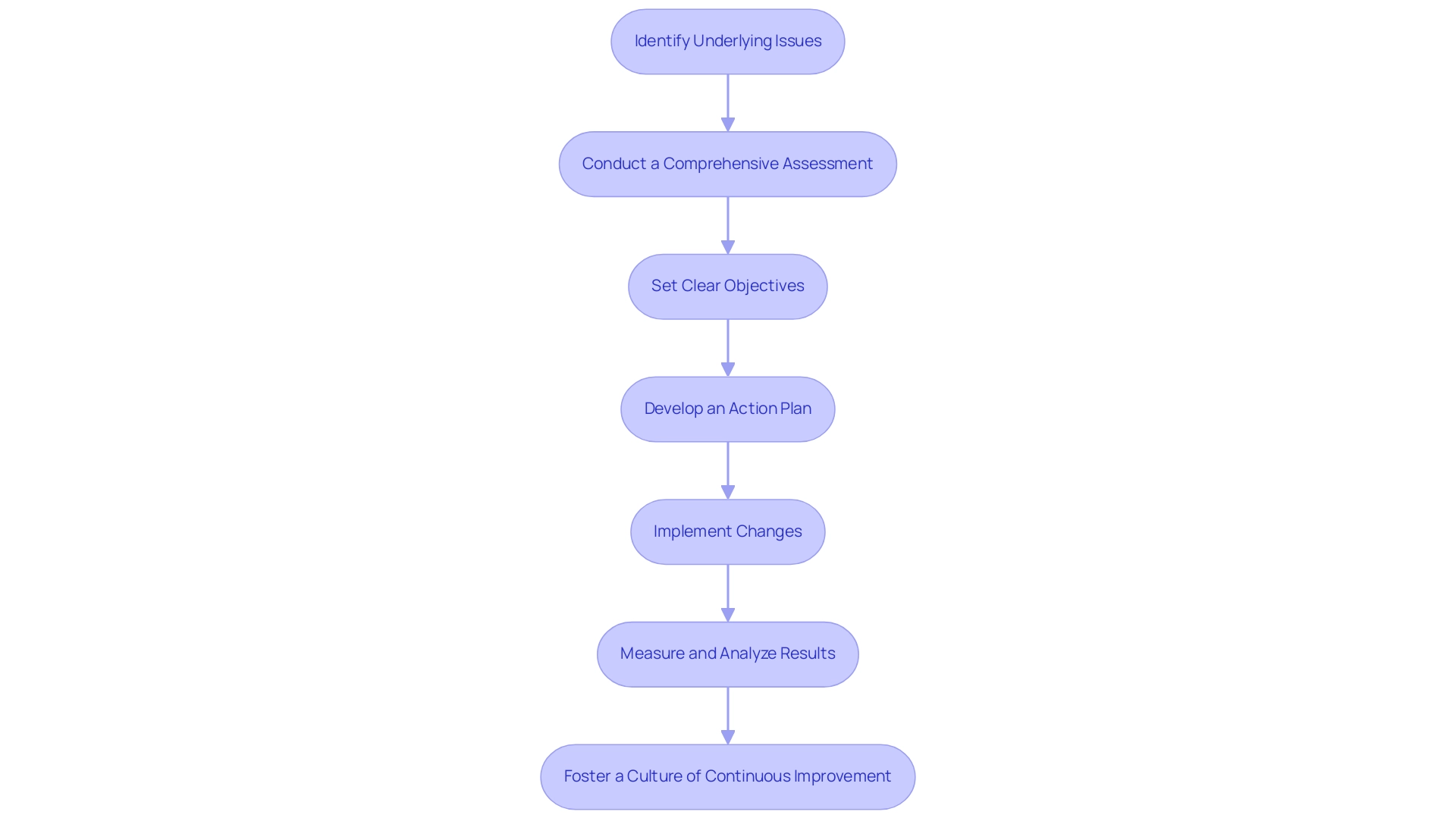
Identifying Key Performance Indicators (KPIs)
Identifying the right KPIs is essential for measuring the success of performance enhancement initiatives. Here are steps to help you identify relevant KPIs:
-
Align KPIs with Business Goals: Ensure that the KPIs you select directly support your organization's strategic objectives. This alignment ensures that you are measuring what matters most.
-
Choose Quantifiable Metrics: Select KPIs that can be easily measured and tracked over time, such as revenue growth, cost reduction, customer satisfaction scores, and employee productivity rates.
-
Streamline Decision-Making: Leverage your client dashboard to facilitate a shortened decision-making cycle. Rapid access to real-time analytics allows your team to take decisive action that maintains organizational health and fosters progress during the turnaround process.
-
Involve Key Stakeholders: Engage with department heads and team members to gather insights on which metrics are most relevant to their areas of responsibility. This collaboration fosters ownership and accountability.
-
Review Industry Benchmarks: Research industry standards and benchmarks to understand what constitutes success in your sector. This context can help you set realistic targets for your KPIs.
-
Regularly Review and Adjust KPIs: Performance enhancement is an ongoing process. Utilize real-time analytics from your client dashboard to monitor your KPIs continuously, ensuring they remain relevant and adjusting them as necessary to reflect changes in business strategy or market conditions.
By carefully selecting and monitoring KPIs, organizations can gain valuable insights into their outcomes and make data-driven decisions that support ongoing development, all while fostering strong relationships through effective communication.
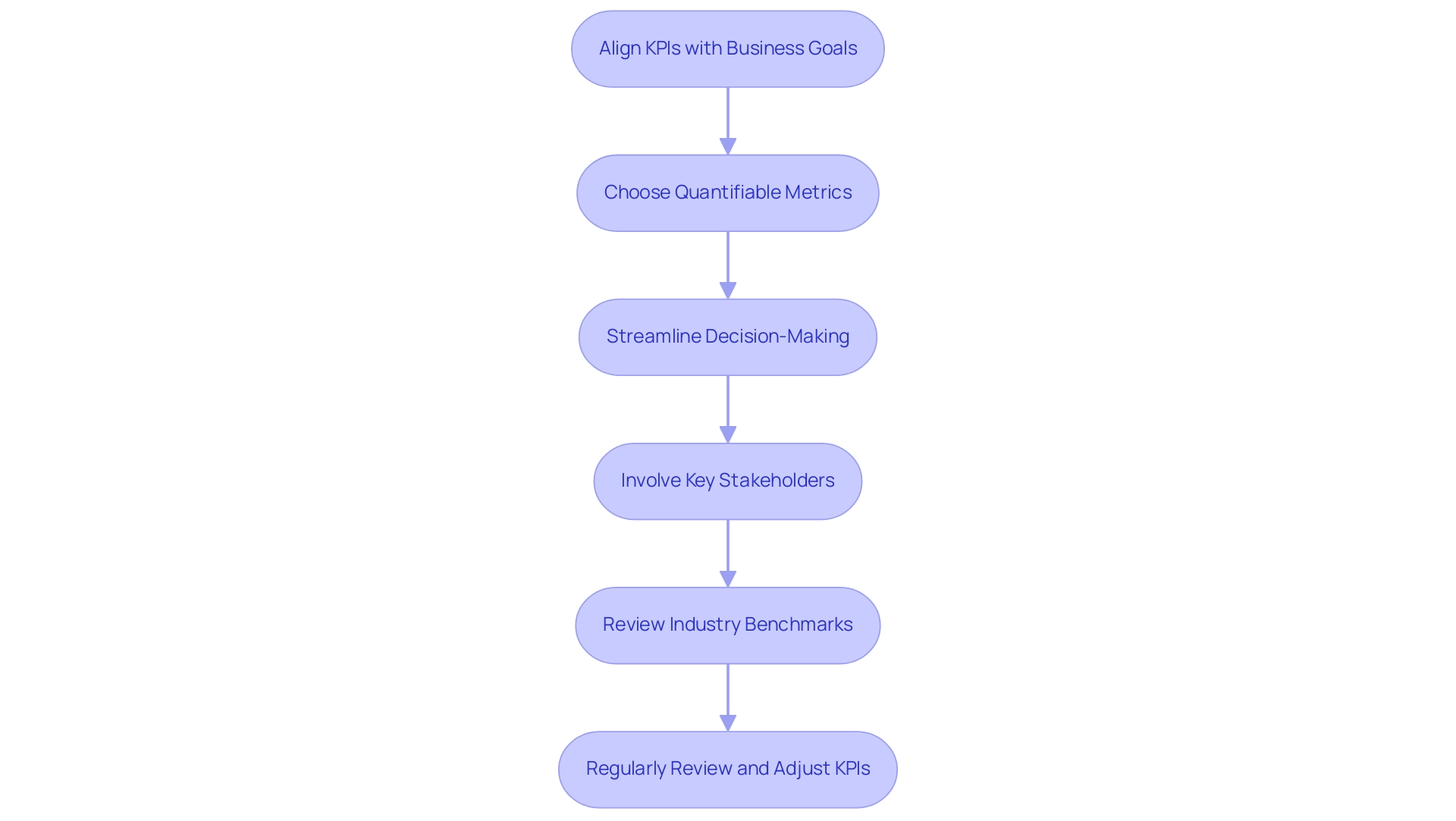
Implementing Change Management Practices
Applying efficient change management techniques is crucial for the success of enhancement initiatives, particularly in the context of turnaround and restructuring. Here are key steps to consider:
-
Communicate the Vision: Clearly articulate the reasons for the performance improvement initiatives and the expected benefits. Effective communication helps to align everyone’s efforts and reduces uncertainty.
-
Involve Employees Early: Engage employees in the change initiative from the beginning. Solicit their input and feedback, which can help identify potential challenges and foster a sense of ownership.
-
Provide Training and Resources: Equip employees with the necessary training and resources to adjust to new methods. This support is vital for building confidence and competence in using new systems or practices.
-
Establish Feedback Mechanisms: Create channels for employees to provide feedback on the changes being implemented. This feedback loop allows for adjustments and demonstrates that management values employee input.
-
Celebrate Milestones: Acknowledge and celebrate accomplishments throughout the development journey. Commemorating milestones enhances morale and strengthens the beneficial effects of the changes being implemented.
By emphasizing change management and utilizing our Rapid-30 process within our comprehensive service turnaround & restructuring consulting framework, organizations can swiftly recognize fundamental business challenges and initiate transformational change, ensuring that enhancement initiatives are accepted and maintained, ultimately resulting in long-term success. Additionally, integrating these practices with our bankruptcy case management services can further enhance organizational resilience during challenging times.
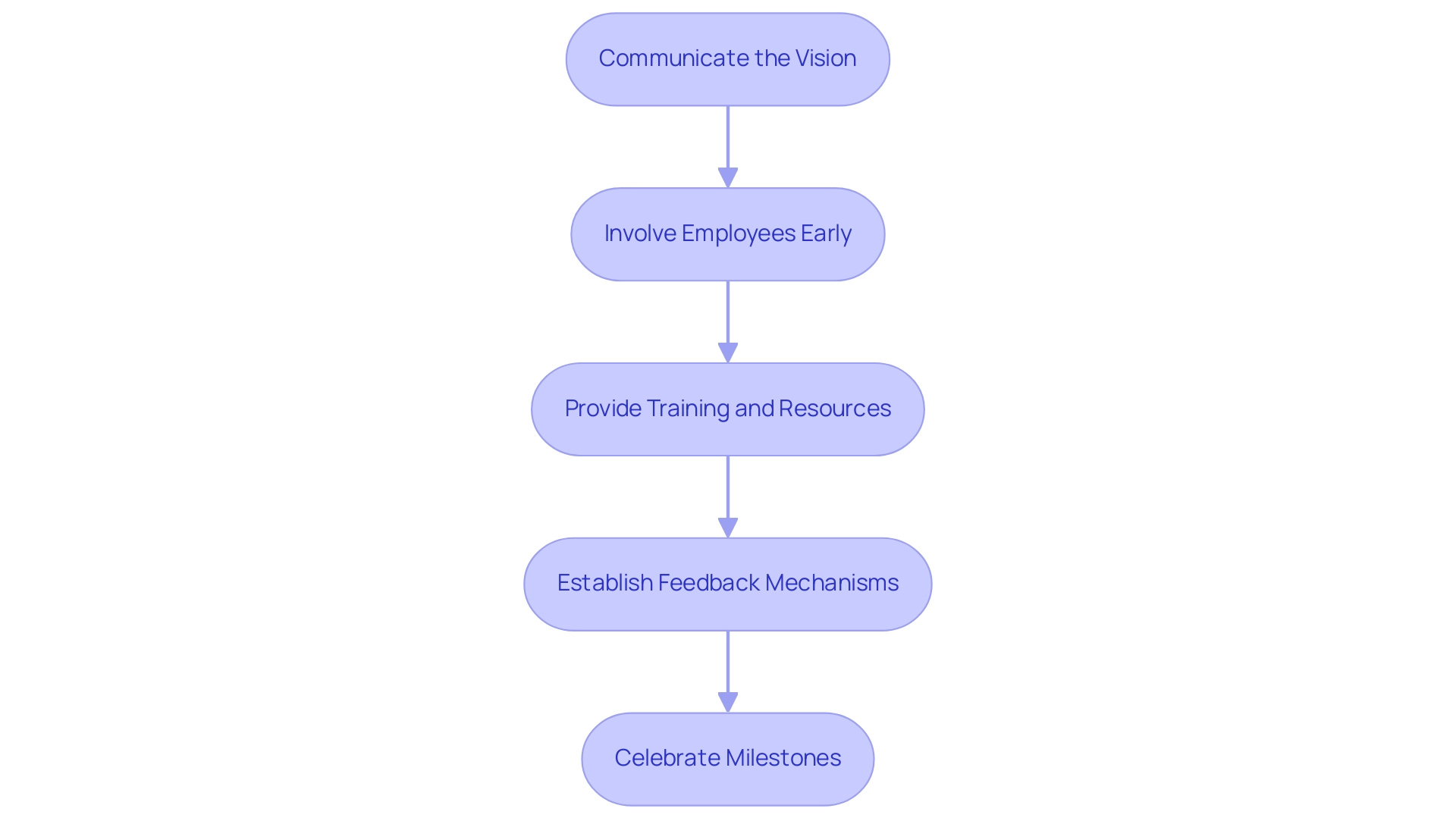
Sustaining Performance Improvement Efforts
To guarantee that enhancements are maintained over time, consider the following strategies:
-
Embed Improvement into Culture: Make enhancement a fundamental aspect of your organizational culture. Encourage continuous learning and adaptation as core values.
-
Streamlined Decision-Making: Support a shortened decision-making cycle by leveraging real-time analytics through a robust client dashboard. This empowers your team to take decisive actions that preserve and enhance organizational performance.
-
Regularly Review Performance Metrics: Continuously monitor KPIs and other performance metrics to ensure that the organization stays on track and can quickly address any emerging issues. Utilize real-time business analytics to diagnose your business health effectively.
-
Encourage Employee Participation: Foster an environment where employees are motivated to propose enhancements and innovations. Their involvement is key to identifying new opportunities for enhancement.
-
Provide Ongoing Training: Offer regular training and development opportunities to keep employees updated on best practices and new technologies that can further enhance performance.
-
Leadership Commitment: Ensure that leadership stays dedicated to enhancing initiatives. Their ongoing support and advocacy are crucial for maintaining focus and resources dedicated to these efforts.
-
Operationalize Lessons Learned: Actively implement insights gained from the turnaround process into everyday operations, ensuring that the organization learns from past experiences to drive future success.
-
Build Strong Relationships: Cultivate strong relationships both internally and externally. This includes fostering collaboration among teams and engaging with stakeholders to enhance overall performance.
By implementing these strategies, organizations can create a culture of sustained performance improvement, ensuring they continuously adapt and thrive in a competitive landscape.
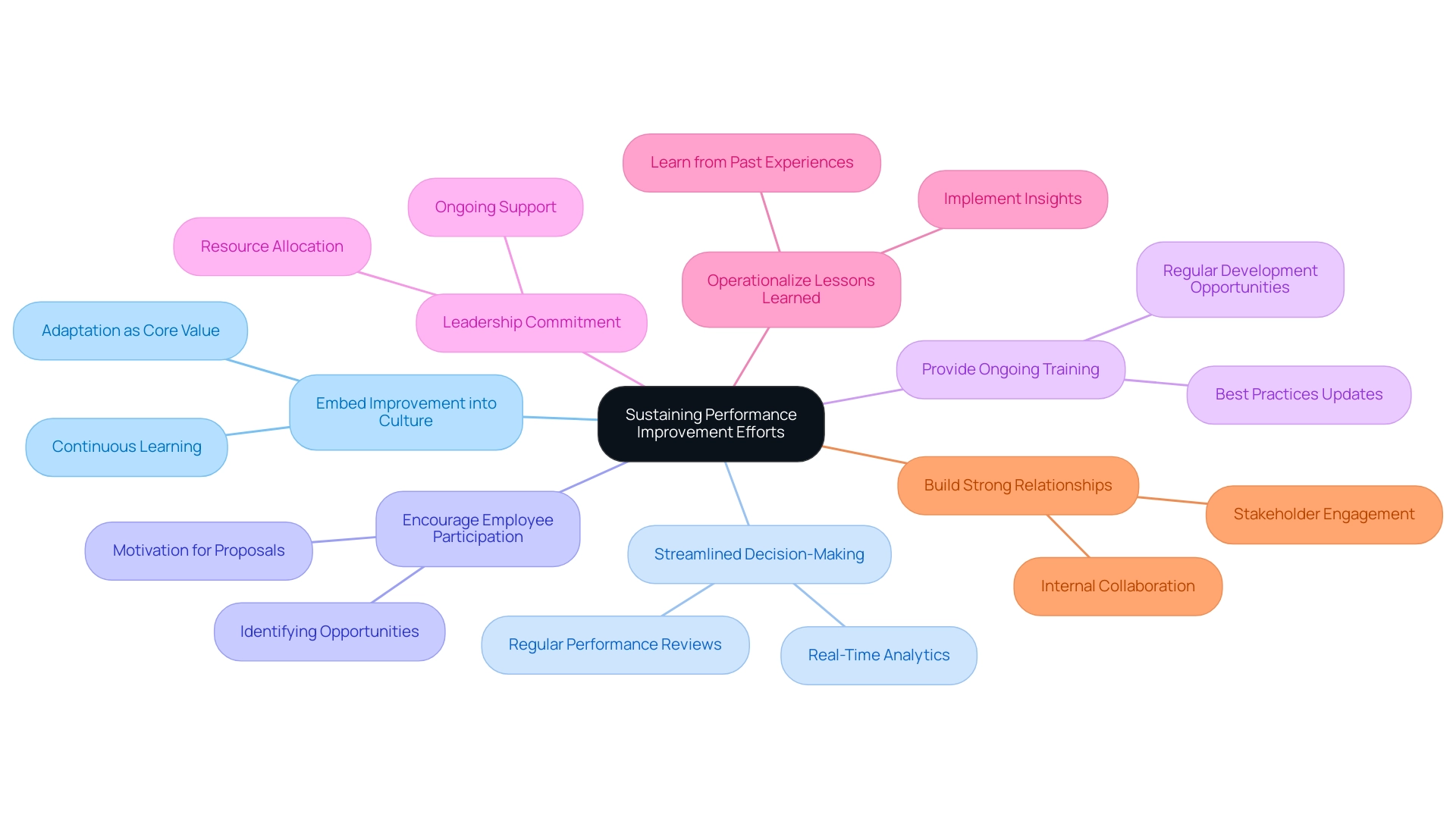
Conclusion
The journey toward business performance improvement is a strategic endeavor that encompasses various essential elements. By identifying underlying issues, organizations can create tailored action plans that enhance operational efficiency and financial management. Engaging employees and focusing on customer satisfaction are vital components that not only boost productivity but also foster a culture of innovation and accountability.
Implementing effective change management practices is crucial for ensuring that these improvements are embraced and sustained over time. By communicating the vision, involving employees early, and providing necessary training, organizations can navigate the complexities of change with greater ease. Furthermore, establishing feedback mechanisms and celebrating milestones helps maintain momentum and morale throughout the process.
Ultimately, sustaining performance improvement requires embedding these initiatives into the organizational culture. By leveraging real-time analytics, regularly reviewing performance metrics, and encouraging employee participation, businesses can create a resilient framework that adapts to market conditions and drives long-term success. Embracing a continuous improvement mindset is not just an option; it is a necessity for organizations aiming to thrive in today's dynamic business landscape.




